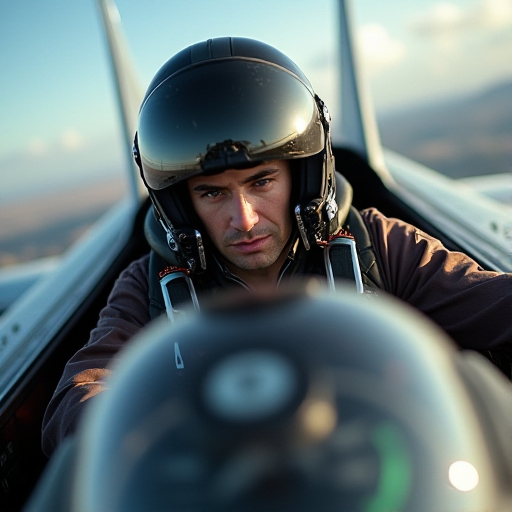The High-Stakes World of High-G Flying: How Pilots Train to Withstand Extreme Forces
Imagine being a fighter pilot, accelerating through the skies in a high-performance aircraft. The rush of adrenaline is intense, but so are the physical forces at play. As you push the limits of speed and agility, the gravitational forces (G-forces) can become overwhelming, causing your vision to fade and your body to lose consciousness. This is known as G-induced loss of consciousness (G-LOC), and it’s a serious concern for military pilots.
The Risks of High-G Flying
When pilots experience high levels of acceleration, the pressure of gravity pushes blood to the lower half of their body, reducing circulation to the upper half. If this continues for too long, they can lose consciousness. “When that happens for an extended enough period of time, you will lose consciousness,” explains Lt. Col. Carolyn Price Moore, an aerospace physiologist and chief of the 19th Air Force’s Aircrew Performance Branch.
Training to Withstand High-G Forces
To prepare for these extreme conditions, military pilots undergo rigorous training programs that include both physical conditioning and specialized techniques for managing G-forces. The goal is to ensure that pilots can withstand high-G forces without losing consciousness or control of the aircraft.
One key technique is the Anti-G Straining Maneuver (AGSM), which involves calculated breathing and squeezing of the lower body to maintain blood flow to the brain. Pilots also wear specialized suits, known as G-suits, which help to constrict blood vessels in the legs and improve circulation.
A Gradual Introduction to High-G Forces
When pilots first start training, they’re introduced to high-G forces gradually, using a human centrifuge that simulates the effects of acceleration. The training is intense, with some pilots experiencing G-forces as high as 9G (nine times the force of gravity).
As they progress through training, pilots learn to recognize the warning signs of G-LOC and take steps to prevent it. They also practice specialized breathing techniques, such as the “air exchange,” which helps to maintain blood flow to the brain.
Accidents Still Happen
Despite the best training and equipment, accidents can still happen. G-LOC has been a factor in several high-profile crashes, including those involving demonstration pilots from the Navy Blue Angels and Air Force Thunderbirds.
However, advances in technology have helped to reduce the risk of accidents. Many military aircraft are now equipped with an Automatic Ground Collision Avoidance System (AGCAS), which can take control of the aircraft if it gets too close to the ground.
Conclusion
The world of high-G flying is a challenging and unforgiving environment, where pilots must be prepared for anything. Through rigorous training and specialized equipment, military pilots learn to withstand extreme forces and stay safe in the skies. While accidents can still happen, advances in technology have helped to reduce the risk and make flying safer for everyone.




